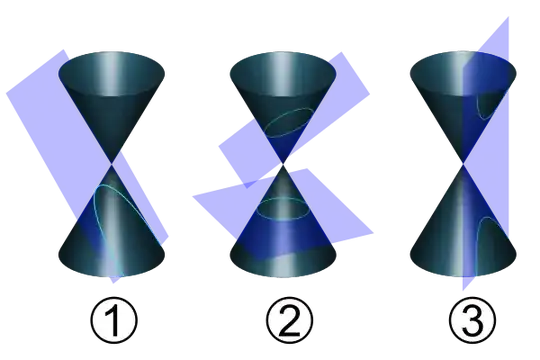I have not been able to find a proof that the following definitions are equivalent anywhere, thought maybe someone could give me an idea:
- A parabola is defined geometrically as the intersection of a cone and a plane passing under the vertex of a cone that does not form a closed loop and is defined algebraically as the locus of points equidistant from a focus and a directrix.
- An ellipse is defined geometrically as the intersection of a cone and a plane that passes under the vertex and forms a closed loop and is defined algebraically as the locus of points the sum of whose distances from two foci is a constant.
- A hyperbola is defined geometrically as the intersection of a double cone and a plane that does not pass under the vertex and is defined algebraically as the locus of points that have a constant difference between the distances to two foci.
Picture of the geometric definitions:

